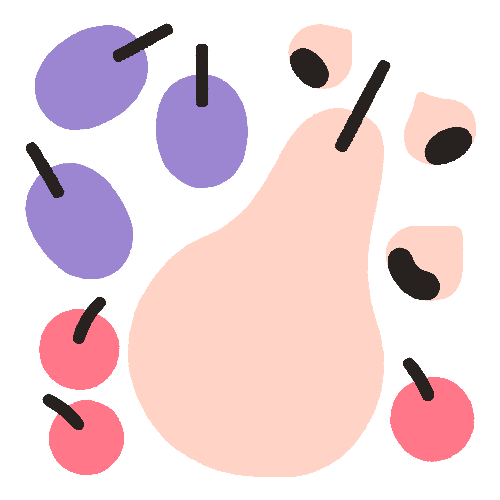Atelier
A Short Guide to Alternative Tree Syrups
Increased maple syrup production has turned many sugar bushes into monocultures. For healthier forests, it’s time to diversify our taste in tree syrups.
Text—Nina Foster
Illustrations—Maxime Prévost
Birch syrup has been a household staple for Ariane Paré-Le Gal since she was a teenager. Her father, Gérald Le Gal, returned to his home province of Manitoba each spring to tap birch trees with his brother. Together, they boiled the sap into a delectable syrup to share with family and friends.
In 1993 Le Gal founded Gourmet Sauvage, a company dedicated to reconnecting people with nature through sustainably harvested wild foods from all regions of Québec. Gourmet Sauvage started with just four products, but as the business grew, so did their wild grocery offerings. It didn’t take long for birch syrup to make its way into the lineup.
Now owned by Paré-Le Gal and her partner, Pascal Benaksas-Couture, Gourmet Sauvage continues to sell birch syrup to consumers across Canada. And, like her father, Paré-Le Gal has passed on a love of the syrup to her children.
“It’s really part of our family now,” she says. “When we have a salad, or when we have tartare, we get the birch syrup out and add a little bit on their plate.”
Although it isn’t out of place in sweet dishes, the flavour of birch syrup — reminiscent of a balsamic reduction — is best suited for savoury recipes. Paré-Le Gal’s favourite way to use it is as a dip with olive oil and fresh bread, which she calls “simple but so delicious.”
Few of us have tasted syrups made from the sap of birch, beech, walnut, and other tree species. But with producers, consumers, and researchers discovering the value of alternative tree syrups for culinary exploration and sustainable forest management, that may be about to change.
Restoring biodiversity in sugar bushes
Alternative tree syrups are, like maple syrup, a non-timber forest product. Tree sap is naturally produced and harvested without cutting down trees, which allows syrup makers to sustain their livelihoods while keeping forests intact. The alternative syrup industry also finds worth in species whose timber value has been rendered next to nothing by pests and disease, such as the American beech.
In Canada, maple syrup production has more than doubled over the last 15 years. But as production grows, so does the pressure to prioritize sugar maple trees at the expense of other vegetation in forests managed for syrup production, known as sugar bushes.
“I’ve been in woods where this happens, where people go in and pretty much clear out the young growth in the understorey of anything that’s not maple. It’s about competition,” says conservation biologist Steve Hagenbuch.
He heads Audubon Vermont’s Bird-Friendly Maple Project. The initiative seeks to improve forest bird habitats by celebrating maple syrup producers who diversify their sugar bush.
When maples surpass 90 per cent of the sugar bush composition, producers have effectively created a monoculture. The forest becomes more susceptible to pests, disease, climate change, and other threats, and its ability to support wildlife is limited.
“I think there could be more and more pressure toward monocultures as the maple industry continues to grow,” says Hagenbuch.
New horizons for syrup producers
Alternative tree syrups give producers a reason to keep non-maple trees standing. They can make the most of other species within their sugar bush, using equipment already set up for maple syrup production. Fortunately, the sugaring seasons of other trees don’t conflict with maple sugaring season, which runs from late winter through early spring. Birch season, for instance, begins in late spring.
“More maple syrup makers got interested in birch syrup because they have the tools, the infrastructure, and the equipment to just continue their maple syrup season with birch syrup,” says Ariane Paré-Le Gal.
But tapping other tree species comes with a few challenges. The high water content of saps like birch and beech makes the work-to-reward ratio much higher than it is with maple syrup production. While it takes about 40 litres of maple sap to produce one litre of syrup, it takes over 100 litres of birch and beech sap to yield the same volume.
Exhaustion presents another obstacle. For many small-scale producers, maple season comes with gruelling 15-hour workdays. Tired and ready to move on to other jobs, cleaning the equipment to start over after months of hard work may be the last thing they want to do.
Producers who persevere, however, are rewarded for their extra work with higher retail prices, unique products, and forests made healthier and more resilient by species diversity.
“As people continue to look for local, sustainable food products, they’re likely to turn to alternative tree syrups,” explains Adam Wild, director of Cornell University’s Uihlein Maple Research Forest and a birch syrup producer.
“Knowing that they’re getting something from a diversified native ecosystem — one that sequesters carbon, filters water and air, stabilizes soil, and provides habitat for birds and other wildlife and land for recreation — is important,” says Wild.
Alternative tree syrups will never surpass the popularity of maple syrup, which has deep roots in cultural tradition and centuries of carefully refined harvest and production practices. But they are bound to make their way onto more shelves as consumers learn about their environmental and culinary benefits.

Birch Syrup
____
Birch has been tapped for centuries in northern Europe, where its sap is used for spring tonics and teas. For years, producers lacked the specialized equipment required to turn large quantities of birch sap into syrup due to its high water content. The advent of reverse osmosis, which allows them to remove roughly 90 per cent of the water from sap before boiling, made birch syrup production more commonplace.
Most birch syrup producers tap either white birch or yellow birch, and some sell a mixture of both. Gourmet Sauvage’s birch syrup comes from white birch trees, while producers such as Érablière Escuminac use yellow birch.
Tasting notes: Flavour may vary based on the time of sap harvest — the first runs of the season are sometimes sweeter than later flows — but birch syrup generally tastes of molasses, anise, and coffee, with an acidity that calls to mind balsamic vinegar. Yellow birch syrup tends to be more floral and acidic than syrup from white birch.
What to try: Birch syrup makes an excellent addition to meat and tofu marinades and stands out when drizzled over charcuterie boards, salads, quiches, pizzas, and scallops.
Where to find it: Birch syrup production is most popular in central Canada, Alaska, and the northeastern United States.

Beech Syrup
____
Beech bark disease has rendered the wood of many American beeches unprofitable. After the beech scale insect damages a beech tree’s bark and vascular tissue, fruiting fungal bodies and cankers encircle the trunk, cutting off the flow of water and nutrients between the tree’s roots and canopy. Suffocated, the beech weakens until strong winds cause it to break and fall — a tendency known as “beech snap.” But the root systems don’t die, and saplings continue to sprout from old stumps, bound for the same demise.
Tapping beech saplings in the years before they fall presents an opportunity to find value in these dying trees. And don’t worry, the pesky scale insect and fungal species don’t contaminate the final product.
Beech syrup production is a newer practice that has yet to become commercially widespread. Harvesting beech sap is slightly more complicated than maple or birch, because the sap won’t flow from the tree on its own; it needs to be drawn out with a vacuum pump system.
Tasting notes: Beech syrup has notes of dried plums, pears, and raisins, with a nutty finish.
What to try: Experiment with the intense, sweet flavour of beech syrup in recipes that would otherwise use maple syrup or molasses, such as gingerbread or pecan pie.
Where to find it: Beech syrup production is more common in the northeastern United States. New Leaf Tree Syrups is among the first producers selling beech syrup at a commercial scale.

Walnut Syrup
____
Black walnut trees are prized for their timber and nut production, but syrup production is somewhat less common. Unlike birch and beech sap, the sugar content of walnut tree sap is similar to maple. However, walnut trees don’t flow as abundantly. It takes approximately seven times as many walnut trees as maples to produce an equal quantity of syrup. As a result, commercial production of pure black walnut syrup is limited, and producers tend to sell walnut and maple syrup mixtures.
Tasting notes: Walnut syrup tastes closer to maple syrup, with overtones of butterscotch and walnut.
What to try: The caramel-like flavour of walnut syrup is well-suited for sweet dishes and beverages. Try it on pancakes, waffles, and vanilla ice cream, or add it to a glass of bourbon, a mixed drink, or a tincture.
Where to find it: Black walnut grows throughout eastern North America, but walnut syrup production is most common in the Appalachian Region of the United States, which has a greater abundance of walnut trees.
Rarer Syrups
____
Syrup producers are constantly experimenting with different tree species, including sycamore, hop hornbeam, basswood, and alder, each with a unique flavour profile and sugar content. It might be a while before these varieties become widely accessible, but keep an eye out for them at boutiques and local farmers’ markets.
***
Often produced in smaller quantities, alternative tree syrups can be difficult to find and are usually more expensive than the maple syrup we know and love. But they are a wonderful way to support healthy, diverse forests; expand your palate; and try subtle new flavours and recipes.
“Reconnecting people to their natural and wild environment through non-timber products, you’re getting people to learn more about their environment, appreciate it, love it, and protect it,” asserts Ariane Paré-Le Gal. “After they’ve tasted birch syrup or wild elderberry capers or cattail hearts, they get more of a sense of what our environment has been providing to us for thousands and thousands of years.”
Nina Foster is a freelance science journalist from New York who has written about forest conservation for the World Wildlife Fund and reported for publications including the Harvard Crimson and the Harvard Gazette.
Never Miss Another Issue
Two issues per year
25% OFF previous issues
Free Shipping in Canada